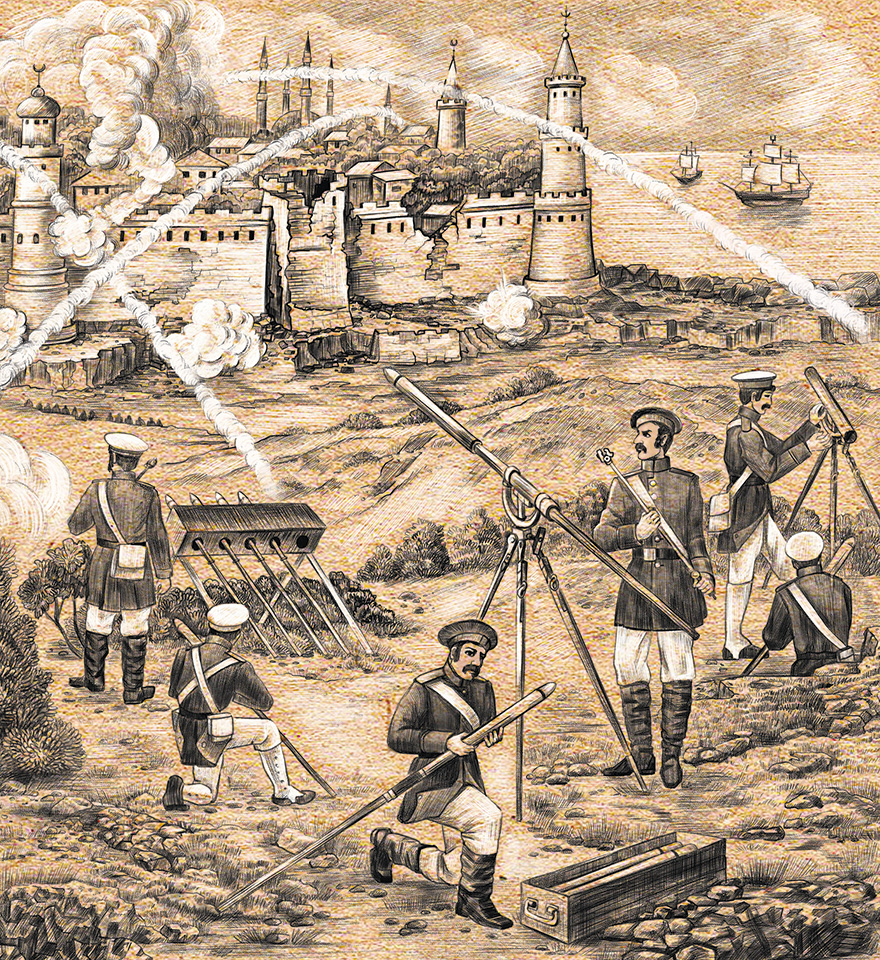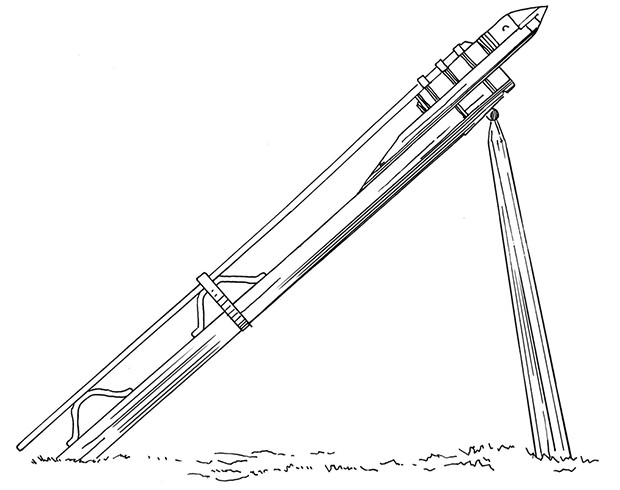ZasyadkoOleksander
November 20, 1779, Lutenka, Russian Empire (now Lutenka, Poltava region, Ukraine) —
June 8, 1837, Kharkiv, Russian Empire (now Ukraine)
Rocket-launching platform
Oleksandr Zasyadko was born in a family in which it was difficult not to become a soldier and also an artilleryman. At least until the great-great-grandfather, all men of his family served in the Cossack army and his father was the main gunner of the Zaporozhian Sich. So Zasyadko joined the Artillery and Engineering Noble Cadet Corps in St. Petersburg and when he graduated, he participated in the largest military campaigns of the time, including the war against the Napoleonic army. But at the age of 36, as a colonel, he resigned and returned to the village where he was born. It was an unexpected decision for those who watched his brilliant military career and quite logical for those who had long nurtured the idea of creating a new artillery weapon — long-range missiles.

Zasyadko sold his father’s manor in Odessa and used the funds to build a forge and a pyrotechnic laboratory. The first few months he spent creating a powder mixture. Nitrate, charcoal and sulfur had to be mixed in such proportions that the missiles had enough energy to fly a few meters to the target and their cost was acceptable to the army. Zasyadko spent most of his experiments in the meadow. To see if the missile hit the target, he made them out of haystacks. If the rocket hit, the haycock was caught in the fire. The engineer’s fellow villagers did not like such experiments very much, it was said that they even complained to the governor. The governor asked whose hay Zasyadko burnt and when he found out that he burnt his own, he replied: “Let him burn it”.
Working for two years for twenty hours a day, Zasyadko achieved his goal — to design missiles that hit targets at a distance of
Zasyadko conducted demonstrations before the then Minister of War and members of the Royal family at the artillery test site near St. Petersburg. During these tests,the range of missiles was

Rocket-launching platform
The chance to test new missiles first fell in 1828 during another Russo-Turkish war. More than 3,000 missiles were used by the military during the stormingof the fortress of Braille. Now, this city belongs to Romania. On the day of the assault at dawn, the gunners fired first high-explosive and then incendiary missiles, which caused panic on the side of the enemy. Four days later, Brailov’s garrison capitulated. This finally convinced the effectiveness of the new weapon, even those who were sceptical about it.
It cannot be said that Zasyadko was the first in the world to design gun-powder rockets. In fact, he was prompted to experiment by information about William Congreve’s missiles. An English engineer in 1805 conducted the first tests of new weapons in the field conditions. They were even used in combat, but mostly to scare the enemy because they hit the target very rarely, they were usually blown away by the wind. Although under favourable conditions, their range was also about 2,700 meters. Earlier, in the late eighteenth century, similar missiles appeared in the Indian army, but the flight range was very short — about one kilometre. Zasyadko managed to create missiles that had the optimal design at that time.